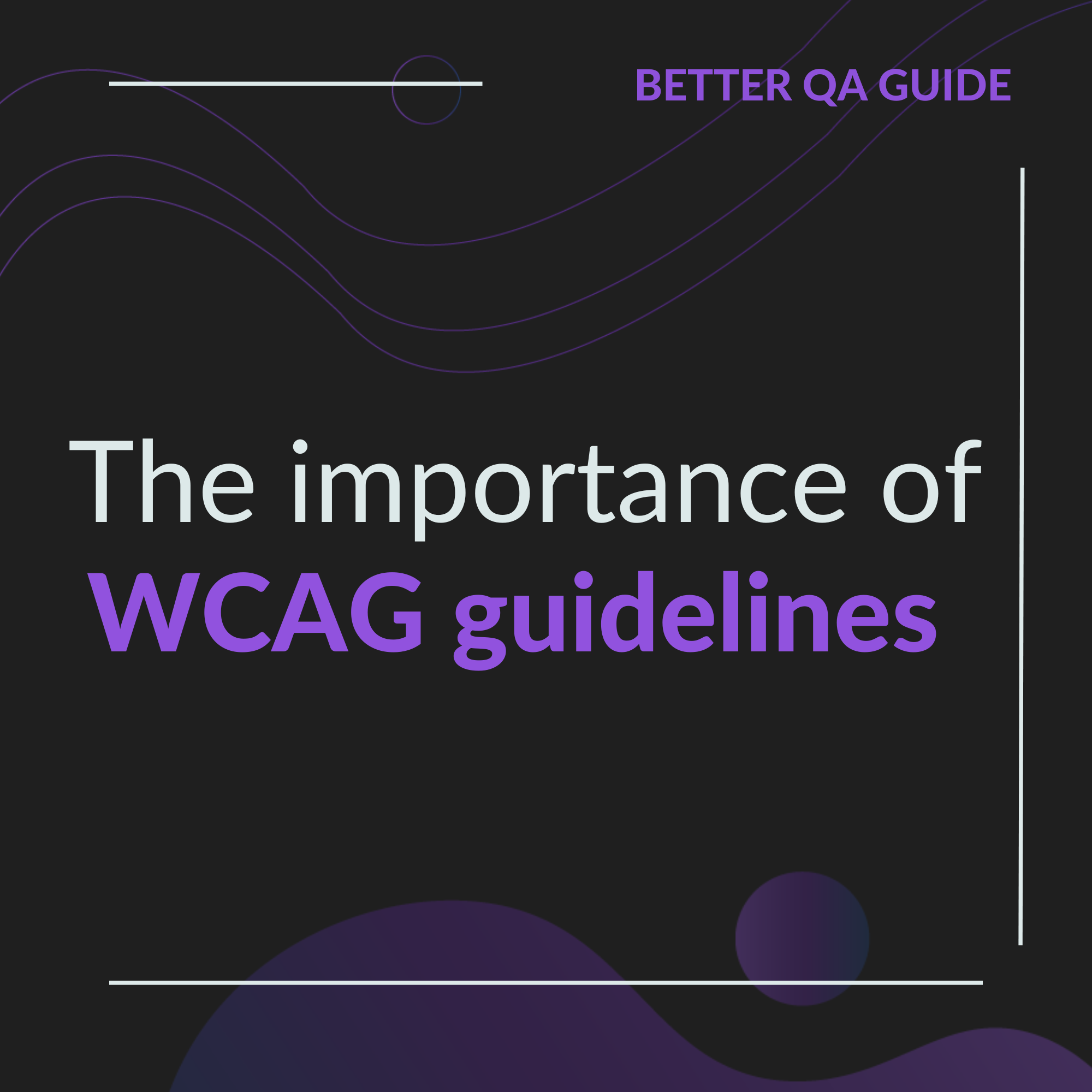As a company that provides Quality Assurance (QA) services, it’s important to take web accessibility seriously. One way to ensure accessibility is to comply with the Web Content Accessibility Guidelines (WCAG), a set of international recommendations for making web content more accessible to people with disabilities.
We at BetterQA value the importance of accessible features to all users. Therefore, adhering to WCAG guidelines is crucial to our work. In this article, we will address WCAG conformance levels, why it is essential to comply with the guidelines, and the role of QA in ensuring products with Web Content Accessibility features are functioning properly.
But what exactly are the WCAG guidelines? In short, they provide a framework for making web content perceivable, operable, understandable, and robust. There are three conformance levels (A, AA, and AAA), with the higher levels being more stringent.
Level A:
- The most basic level of conformance
- Focuses on addressing the most critical and easily achievable accessibility issues
- It provides a baseline level of accessibility but may not be sufficient for all users
Level AA:
- The level of conformance that is generally recommended as a minimum standard
- It builds upon Level A and includes additional criteria that address more complex accessibility issues
- Addresses a broader range of disabilities, including visual, auditory, and cognitive disabilities
- Strives to provide a more comprehensive level of accessibility
Level AAA:
- The highest level of conformance
- It builds upon Level AA and includes additional criteria that address the most complex and specialized accessibility issues.
- Addresses an even broader range of disabilities, including those with very specific needs
- Provides the highest level of accessibility, but may not be achievable in all situations|
- It’s important to note that achieving higher conformance levels can be more challenging, time-consuming, and expensive. Therefore, it’s up to each organization to determine which level of conformance is appropriate for their needs, considering factors such as their target audience, budget, and legal requirements.
Why is it essential to comply with WCAG guidelines?
For one thing, it’s often legally required. In many countries, including the United States, web accessibility is protected by laws such as the Americans with Disabilities Act (ADA) and the Rehabilitation Act. But even if it’s not required by law, complying with WCAG guidelines is the right thing to do from an ethical standpoint. Making web content accessible can improve the lives of people with disabilities and create a more inclusive society. And from a business standpoint, it can also benefit companies by reaching a wider audience, improving user experience, and avoiding lawsuits.
So, what can QA do to ensure compliance with WCAG guidelines?
Here are some steps you can take:
- Understand the guidelines: Familiarize yourself with the WCAG guidelines, their principles, and their success criteria. Make sure you know which level of conformance is required for your project.
- Use testing tools: Many automated testing tools are available to help you check for compliance with WCAG guidelines. However, keep in mind that manual testing is also necessary to catch issues that automated tools may miss.
- Involve stakeholders: Work closely with designers, developers, and users to ensure that accessibility is considered throughout the development process. Make sure everyone understands the importance of WCAG compliance and their role in achieving it.
- Report and track issues: When you find accessibility issues, report them clearly and accurately so they can be fixed. Use a tracking system to ensure that issues are addressed in a timely manner.
By following these steps, you can help ensure that web content is accessible to all users, regardless of their abilities. And by providing web accessibility services, your company can be a leader in promoting inclusivity and accessibility on the web.
In conclusion, compliance with WCAG guidelines is essential for web accessibility, and QA is critical in ensuring compliance. By understanding the guidelines, using testing tools, involving stakeholders, and reporting and tracking issues, your company can provide high-quality web accessibility services and help create a more inclusive web.
Book a meeting with one of our professionals if you have questions regarding WCAG guidelines.
Stay Updated with the Latest in QA
The world of software testing and quality assurance is ever-evolving. To stay abreast of the latest methodologies, tools, and best practices, bookmark our blog. We’re committed to providing in-depth insights, expert opinions, and trend analysis that can help you refine your software quality processes.
Delve deeper into a range of specialized services we offer, tailored to meet the diverse needs of modern businesses. As well, hear what our clients have to say about us on Clutch!
